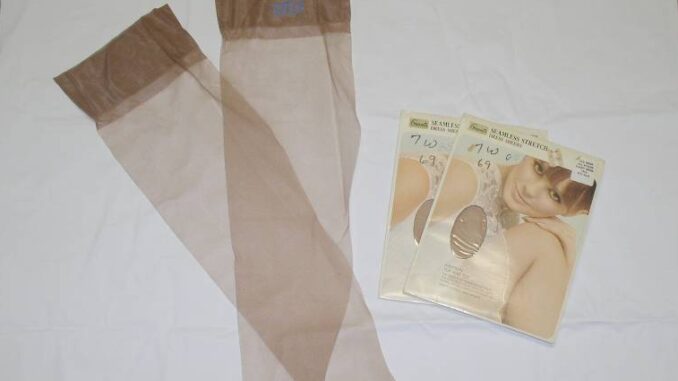
The COVID-19 pandemic paused what has become a yearly trend of news stories describing Black Friday shopper brawls and crowd stampedes. The aggression on display over discounted items is typically used to complain about the state of modern society.
Modern society absolutely has problems – we’ve had ample demonstrations of that fact over the last twenty-five years – but they’re hardly a new development for the digital age. They’re an outgrowth of the human condition. As evidence, I offer the nylon riots of 1946.
The country had spent the past half decade pulling together in a way which was to earn them the designation of “the greatest generation”. Young men put their lives on the line for the defense of the country and our allies while everyone stateside strove to maintain the heightened production required, all despite years of deprivation during the Great Depression. One might reasonably expect that the camaraderie engendered by jointly overcoming hardship would have forged a fundamental appreciation of their fellow citizens.
The test of that theory came in late 1945 and early 1946. The synthetic fabric of nylon was developed in the 1930s and debuted as a material for commercially available stockings in 1940. They were an immediate smash hit, and they quickly became the must-have item in women’s wardrobes. Relatively comfortable, supportive, stylish, and able to create a shadowy illusion of perfect skin, they were beloved. Most importantly, they were cheaper and more damage-resistant than existing silk stockings.
Until December 8, 1941. When the United States officially entered WWII, production of many necessary items was increased, and among the things required were ropes, mosquito netting, boot laces and parachutes. Nylon was a particularly useful material for such things and creation of stockings was discontinued in favor of military supplies.
When the war was over, Du Pont announced it would go back into production of stockings. It was an obvious choice, particularly in view of what had happened during the war years: a black market for stockings had developed, with both new and used pairs fetching high prices; homes had been broken into with only stocking stolen; and some women had taken to drawing lines on themselves or rubbing gravy onto their legs in efforts to emulate the effect of nylons.
With such events fairly common, it should have been no surprise when an excess of people lined up to purchase the initial shipments. The most famous of these cases happened in Pittsburgh, Pennsylvania. On June 12, 1946, between 30,000 and 40,000 women lined up to purchase what were to be only about 13,000 pairs of nylon stockings. Some lined up more than 24 hours in advance, despite torrential rains. The hosiery store which was selling the stockings announced limits, including a requirement that only women would be allowed to purchase the nylons; that caused threats and bodily expulsion of men who attempted to line up, and police were called to monitor the situation. The oversight proved wise; small altercations cropped up throughout the day as allegations of line-cutting were made, and in at least one documented case multiple policemen were required to separate two women who were involved in a bloody fight.
While the Pittsburgh crowd draws the most attention because of its size, similar but smaller events happened throughout the country. Even in places with only a few hundred queued shoppers, mass fighting and screaming matches were documented, leading to the “riot” term being adopted.
Question of the night: Do you have any particularly beloved clothing or fashion accessories?
